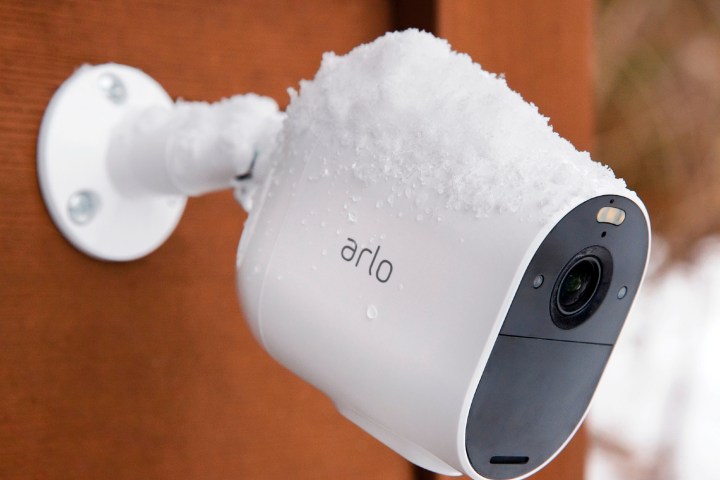
Electronics and smart home gadgets bring convenience and automation to your home and often need minimal maintenance, save for the odd firmware update. However, owners living in cities with extreme winters need to worry about how the weather will impact their gear. Most shoppers are eager to set up and play with their new toys, and they mainly worry about getting them quickly with that luxurious same-day shipping and don’t think ahead to how that new device will operate when the weather turns harsh.
The truth is, if you live where it gets bitterly, extremely cold, your smart devices like wireless cameras, lights, and other components will likely stop working. Here’s everything you need to know about smart home devices and cold weather.
Pay attention to temperature range
When shopping for an outdoor device, we usually pay attention to the IP rating. Many people see this number and assume it means their gadget is impervious to any kind of weather. That might be true to some extent, but the IP rating doesn’t extend to extreme heat or extreme cold. IP ratings only rate for water and/or dust ingression, not for how effectively cold or heat can penetrate. To know how a device might be able to withstand cold winters or hot summers, you need to check the temperature operating range.

Most outdoor devices will provide this operating range somewhere in the specs. If you don’t see them, that’s a bit of a red flag. It might be worth reaching out to customer service or checking user reviews to see how they’ve held up for others in real-world conditions.
Many outdoor cameras, such as the popular Arlo Pro 4, state they can operate from about -4 degrees Fahrenheit to 113 degrees F, which is a pretty decent range. However, if you live in a place where temperatures below -4 are common in winter, you may run into problems.
What happens to smart home devices when it’s too cold?
If you do experience extreme winter temperatures, your device will likely shut down and stop working, at least for a while. Electronic components made for the outdoors, while durable for the most part, do have limitations. We’ve experienced a smart outdoor camera for example that quit working once the temperature went below -5 degrees. While that’s frustrating, it’s not common, and it’s not the end of the world. Often once temperatures rise again, the device will thaw and automatically reconnect to the network. In some cases, you might have to perform a reset or a Wi-Fi reconnection. It’s not fun having to go outside in a foot of snow and subzero temperatures to mash that reset button, but it’s a small price to pay for the device to continue to provide reliable service the other 48 weeks of the year.
Choose hardwired over battery in cold environments
Extreme cold is terrible for rechargeable batteries, particularly some lithium-ion cells like those you’d find in Ring devices, for example. “Really” cold weather can make it difficult for the battery to hold a charge, and “extreme” temperatures can stop them from functioning altogether, essentially freezing them solid.
There’s not much you can do about Mother Nature, but you can take some preventative action by choosing hardwired options if you do live in a place where extreme temps are the norm. It’s no guarantee, but eliminating batteries from the equation can help keep your systems from going offline. If you do opt for battery-powered devices, be sure to have a few spares on hand to combat the extreme cold.
What to do if your device is frozen
If you do end up with a frozen camera, smart light, or other smart home gadget, there are a few things you can do. First, simply wait for temperatures to warm up. Most of these devices, as noted earlier, will thaw and come back online on their own. If you want to speed this process up, you can:
Take your device indoors. Allowing the battery or components to return to normal temperature levels will help restore the device. You can simply remove the battery and bring that inside until it warms up, or remove the entire device so that all of those electronic components can normalize.

Recharge the battery fully. This step helps particularly if you’re using a system that uses a solar panel to recharge your battery. Try manually recharging your battery fully instead of letting it battle the elements. Let it get a full charge and then return it to the great outdoors, where you should have bought it some time.
Consider insulation. While most of these outdoor-specific smart home gadgets are indeed built to manage many extreme environments, sometimes cold weather pushes the envelope. There are plenty of chatrooms filled with advice for wrapping your device in special insulation to give it some additional protection. Some users have reported that pipe or duct wrap insulation secured with foil tape can slow cold penetration, but this will likely not stop it completely — you may just be buying some time. Be sure to read up on this method if this is a recommended option for your particular camera or device (and don’t forget to remove it when things warm up, lest you create an overheating issue come spring).
Extreme temperatures can affect all kinds of smart home gadgets, and while it may be frustrating to have your devices knocked out by the cold, just remember, it’s not unexpected. In our tests, we’ve temporarily lost power on a couple of Ring outdoor cameras when temperatures plunged to -30 degrees, while at the same time the Philips Hue Outdoor smart lights installed at the same location kept right on shining. Win some, lose some.



